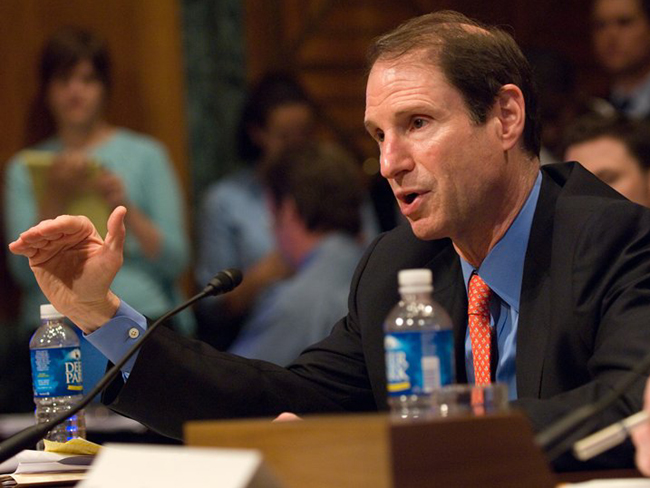Sen. Ron Wyden (D-OR) is sort of the bond guy around the Senate. He’s a big fan of bonds as a way to raise money for infrastructure projects without much federal cost. Now he’s introduced a bill to create Transportation and Regional Infrastructure Project bonds.

They’re different from Build America Bonds in several significant ways. One difference: they will probably never see the light of day.
That’s the word from sources in the transportation community. They say they just don't see the Republican buy-in for this program.
With the Highway Trust Fund running out of money, everyone's looking for creative ways to bring in new revenues that don't require taxes, and all eyes are on the private sector. Bonds can be a good way to bring in some money for infrastructure projects -- the Build America Bonds, passed as part of the Recovery Act, were very popular.
But House Transportation Committee Chair John Mica has refused to talk about bonds as part of his reauthorization package, claiming that every time he utters the word he "rocks the bond market." And Republicans have lost a bit of their love of bonds as a leveraging tool.
The GOP used to be way into bonds – the Build America Bonds Act of 2005 had more GOP co-sponsors than Democrats – but this time around, it took Wyden a long time to get one Republican co-sponsor, and insiders don’t expect there will be more clamoring to get on the bill. It’s just a new political climate: even a small amount of federal cost, in the interest of raising a larger amount of private money, is considered harmful debt. The $12.3 billion cost of the TRIP bonds is supposed to be offset by customs fees, according to Wyden’s bill.
Among several significant difference between BABs and TRIPs: BABs were run out of municipal governments, whereas TRIPs will help fund state infrastructure banks. The House transportation bill includes support for state infrastructure banks, but not all states currently have them, and of the 32 states that do have them, most of them are considered ineffectual. Experts say it’s putting it generously to say that two states have well-functioning I-banks – California and South Carolina. The rest are too small to attract significant private capital.
We write often about the dangers of writing blank checks to state DOTs, which often don’t use money in the most effective ways possible. From what we hear, the TRIPs bonds would not only channel money through states, they would do it by formula – two percent per state. Experts say that’s a ridiculous way to divvy up money, since states don’t all have equal infrastructure needs.
There are several other differences between BABs and TRIPs. TRIPs would have a defined cap of $50 billion, whereas BABs let each municipality set the subsidy, and the total ended up at $181 billion. Wyden also says the TRIPs are more egalitarian, allowing smaller investors to participate, as the TRIPs give tax credits, not tax exemptions. (I have to admit, after several conversations about the difference, I’m still not clear on how one is more inclusive of the little guy than the other.) BABs funded all types of infrastructure projects, while TRIPs are exclusively for transportation.
Wyden has framed his proposal as a six-year plan, to be rolled into the transportation reauthorization. Since the Senate version of the reauthorization is only for a two-year period, he may end up having to revise it for a shorter timeframe.





